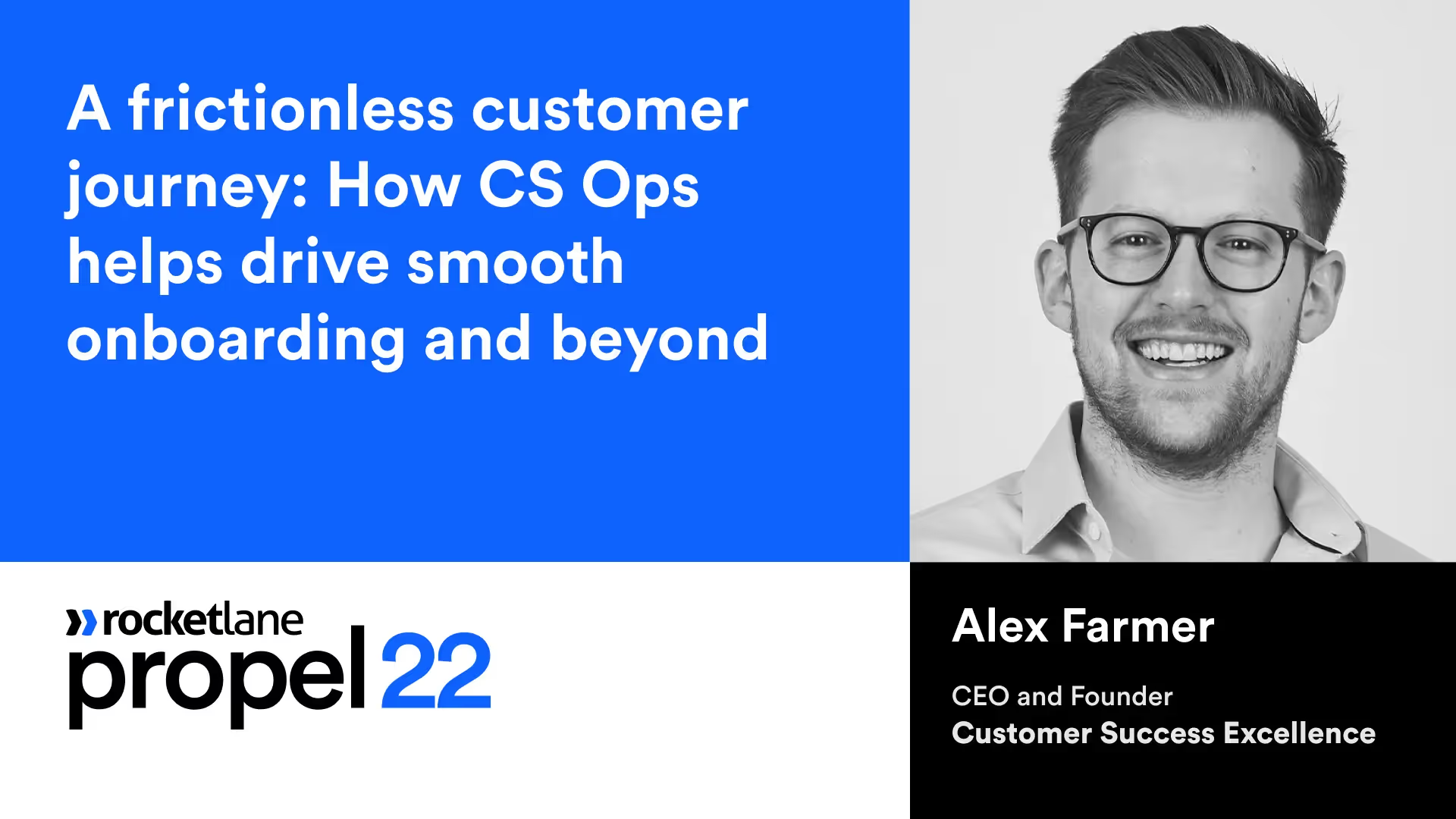In this session of Propel 22, Alex Farmer, CEO and Founder, Customer Success Excellence, and VP, Customer Success at Cognite, shared his insights on frictionless customer journeys and how CS Ops helps drive smooth onboarding and beyond.
The session focused on:
- The onboarding expectation gap and how CS Ops can fill it
- The ‘road trip to business value approach’ to introduce CSMs at the right time
- The People, process, and technology framework for frictionless post-sale journeys
- An alternative to the ‘org tech stack’ approach to supporting customers
Here are our five key takeaways from the session.
1. The onboarding expectation gap
Customer expectations, set high in the pre-sale journey, are often unmatched post-sale. This is mainly because pre-sales activities see high investments (events, conferences, expensive websites, lead automation, AI-enabled pipeline workflows, etc.). At the same time, the post-sale journey is rarely given the attention and investment it needs – from a personnel, process, and technology standpoint. This eventually impacts the net dollar retention.
Focusing on people, processes, and technology via CS Ops can significantly bridge this gap and ensure a frictionless post-sales experience.
2. The ‘people’ approach for a frictionless post-sale experience: The road trip to business value
The customer journey can be viewed as a road trip to a destination of business value. Here’s an approach that can help make this journey smooth for customers.
When the customer starts their journey, they are joined in the backseat by the CSM. The Implementation Consultant drives the car while the Project Manager (in the passenger seat) helps them navigate. The Implementation Consultant (and the Project Manager) explain the route ahead before starting the journey.
The CSM periodically interacts with the customer during the drive to sense-check how the journey is going.
When the customer is set up and ready to take over (post-implementation), the Implementation Consultant and PM hand over the car to the customer. The CSM, now in the passenger seat, helps the customer navigate the rest of the journey.
If companies don't have a CSM in the car from the start of the journey, they arrive at the scene much later, looking for a chance to jump into the car – an accident waiting to happen.
In the onboarding world, handovers could lead to such accidents on similar lines. The goal, therefore, is to minimize the number of handovers. Introducing and engaging right from the pre-sales stage is an effective way.
This way, the CSM needs to continue the momentum from the sales phase, through onboarding, to value delivery.
3. Why CSMs need to be introduced early: Four lessons from the road trip to business value
- Avoiding the value vacuum: Sales demonstrates hypothetical value at the start of the customer journey while Services dive straight into features. This leaves a vacuum as far as translating value goes. During onboarding, the CSM’s involvement ensures that the value conversation gets its attention.
- Engaging executives: The CSM can keep executives engaged right from the onboarding phase to ensure a fruitful long-term relationship.
- Preventing the blurring of lines between CS and Support: If a CSM is introduced post-go-live, most conversations are more likely to focus on bugs and issues, not value delivery.
- Quantifying ROI: It can be hard to quantify ROI when the implementation doesn’t consider it. The CSM can use the CS plan in the discovery document to implement onboarding, so it’s easier to quantify the value realized.
4. The Process approach: The framework for frictionless customer journeys

This approach focused on identifying:
- What needs to be done at each stage of the onboarding journey
- How exactly these are executed
- Unexpected moments of delight to surprise and engage visitors (e.g., celebrating the 100th support case on the platform)
5. The alternative to the org tech stack approach
Companies typically resort to a conventional ‘org tech stack’ approach as they look to educate, serve, and support their customers.

However, adoption continues to be a challenge, mainly because every team that interacts with the customer brings in its approach, tools, and systems to the process.
At Cognite, all these elements have been combined into a consolidated outside-in, post-sale experience, a community-led portal for customers. This way, customers have one place to access everything they need in their post-sale journey and interact with other customers from the community.























.webp)